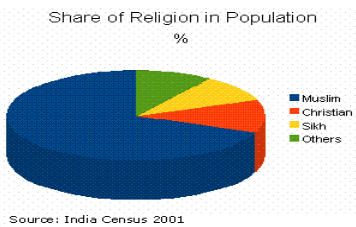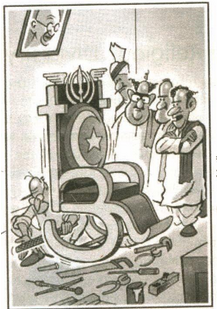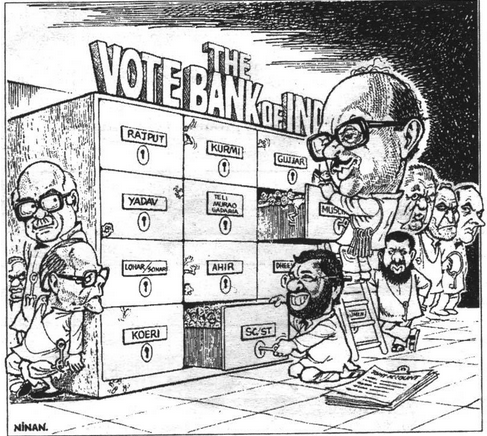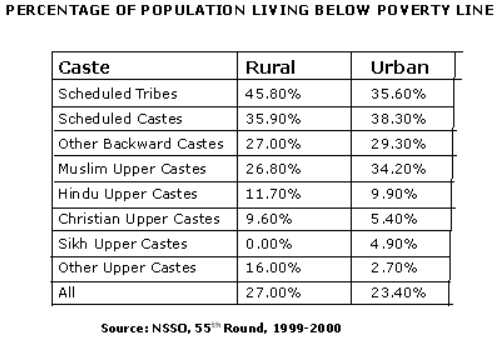
Religion, Communalism And Politics
Gender, Religion And Caste of Class 10
DIFFERENT CONSIDERATIONS ABOUT RELIGION AND POLITICS:
- Gandhiji's view regarding Religion and Politics: Gandhiji used to say that religion can never be separated from politics. What he meant by religion was not any particular religion like Hinduism or Islam, but moral values that form all religions. He believed that politics must be guided by ethics drawn from religion.
- Humanist, Religion and Politics: Human rights groups in our country have argued that most of the victims of communal riots in our country are people from religious minorities. They have demanded that the government should take special steps to protect religious minorities.
- Women, Religion and Politics: Women's movement has argued that family laws of all religions discriminate against women. So they have demanded that government should change these laws to make them more equitable.
CONCLUSION:
- All these instances involve a relationship between religion and politics. But they do not seem very wrong or dangerous. Ideas, ideals and values drawn from different religions can and perhaps should play a role in politics. People should be able to express in politics their needs, interests and demands as a member of a religious community.
- Those who hold political power should sometimes be able to regulate the practice of religion so as to prevent discrimination and oppression. These political acts are not wrong as long as they treat every religion equally.
COMMUNALISM:
Communalism is a situation when a particular community tries to promote its own interest at the cost of other communities.
The communalism problem becomes acute when:
- Religion is seen as the basis of the nation.
- When one religion and its followers are discriminated against by another.
- When people start believing that beliefs of one religion are superior to those of other religion.
- When the demands of one religious group are formed in opposition to another.
- (v) When state power is used to establish domination of one religious group over the rest.
COMMUNAL POLITICS:
Religion is used in politics in exclusive and partisan terms. This manner of using religion in politics is communal politics. Communal politics is based on the idea that religion is the principal basis of social community. Communalism involves thinking along the following lines:
- The followers of a particular religion must belong to one community.
- Their fundamental interests should be the same. Any difference that they may have is irrelevant or trivial for community life.
- Communalism also follows that people who follow different religions cannot belong to the same social community. If the followers of different religions have some commonalities, these are superficial and immaterial. Their interests are bound to be different and involve a conflict.
- Sometime communalism leads to the belief that people belonging to different religions cannot live as equal citizens within one nation. Either one of them has to dominate the rest or they have to form different nations.
COMMUNALISM CAN TAKE VARIOUS FORMS IN POLITICS:
- The most common expression of communalism is in everyday beliefs. These routinely involve religious prejudices, stereotypes of religious communities and belief in the superiority of one’s religion over other religions. This is so common that we often fail to notice it, even when we believe in it. A communal mind often leads to a quest for political dominance of one’s own religious community. For those belonging to majority community, this takes the form of majoritarian dominance. For those belonging to the minority community, it can take the form of a desire to form a separate political unit.
- Political mobilisation on religious lines is another frequent form of communalism. This involves the use of sacred symbols, religious leaders, emotional appeal and plain fear in order to bring the followers of one religion together in the political arena. In electoral politics this often involves special appeal to the interests or emotions of voters of one religion in preference to others.
- Sometimes communalism takes its most ugly form of communal violence, riots and massacre. India and Pakistan suffered some of the worst communal riots at the time of the partition. The post-Independence period has also seen large scale communal violence.
Share of Religion in Population

SECULAR STATE
- Communalism was and continues to be one of the major challenges to democracy in our country.
- The makers of our Constitution were aware of this challenge. That is why they chose the model of a secular state.

This chair is for the CM-designate, to prove his secular credentials…
There will be plenty of rocking!
This choice was reflected in several constitutional provisions that we studied last year:
- There is no official religion for the Indian state. Unlike the status of Buddhism in Sri Lanka, that of Islam in Pakistan and that of Christianity in England, our constitution does not give a special status to any religion.
- The Constitutional provides to all individuals and communities freedom to profess, practice and propagate any religion, or not to follow any.
- The Constitution prohibits discrimination on grounds of religion.
- At the same time the Constitution allows the state to intervene in the matters of religion in order to ensure equality within religions communities. For example, it bans untouchability.
CONCLUSION:
- Secularism is not just an ideology of some parties or persons. This idea constitutes one of the foundations of our country.
- Communalism should not be seen as a threat to some people in India. It threatens the very idea of India. That is why communalism need to be combated.
- A secular Constitution like ours in necessary but not sufficient to combat communalism.
- Communal prejudices and propaganda needs to be checked in everyday life and religion based mobilization needs to be countered in the arena of politics.
CASTE AND POLITICS:
Unlike gender and religion, caste division is unique to India. All societies have some kind of social inequality and some form of division of labour. In most societies, occupations are passed on from one generation to another. Caste system is an extreme form of this. What makes it different from other societies is that in this system, hereditary occupational division was sanctioned by rituals. Members of the same caste group were supposed to form a social community that practiced the same or similar occupation, married within the caste group and did not eat with members from other caste groups. Caste system was based on exclusion of and discrimination against the ‘outcaste’ groups. They were subjected to the inhuman practice of untouchability.
CURRENT STATUS OF CASTE RELATED PREJUDICE:
Partly due to efforts of our great leaders and partly due to other socio-economic changes, castes and caste system in modern India have undergone great changes. With economic development, large scale urbanisation, growth of literacy and education, occupational mobility and the weakening of the position of landlords in the villages, the old notions of caste hierarchy are breaking down.
Now, most of the times, in urban areas it does not matter much who is walking along next to us on a street or eating at the next table in a restaurant. The Constitution of India prohibited any caste-based discrimination and laid the foundations of policies to reverse the injustices of the caste system.
Yet caste has not disappeared from contemporary India. Some of the older aspects of caste have persisted. Even now most people marry within their own caste or tribe. Untouchability has not ended completely, despite constitutional prohibition. Effects of centuries of advantages and disadvantages continue to be felt today.
The caste groups that had access to education under the old system have done very well in acquiring modern education as well. Those groups that did not have access to education or were prohibited from acquiring it have naturally lagged behind. That is why there is a disproportionately large presence of ‘upper caste’ among the urban middle classes in our country. Caste continues to be closely linked to economic status.
CASTE IN POLITICS:
- In the case of communalism, casteism is rooted in the belief that caste is the sole basis of social community.
- According to this way of thinking, people belonging to the same caste belong to a natural social community and have the same interests which they do not share with anyone from another caste.
- Caste is one aspect of our experience but it is not the only relevant or the most important aspect caste to a large extent influences polities.
- (i) When parties choose candidates in elections, they keep in mind the caste composition of the electorate and nominate candidates from different castes so as to muster necessary support to win elections. When governments are formed, political parties usually take care that representatives of different castes and tribes find a place in it.
- (ii) Political parties and candidates in elections make appeals to caste sentiment to muster support. Some political parties are known to favour some castes and are seen as their representatives.
- (iii) Universal adult franchise and the principle of one-person-one-vote compelled political leaders to gear up to the task of mobilizing and securing political support. It also brought net consciousness among the people of castes that were hitherto treated as inferior and low. The focus on caste in politics can sometimes give an impression that elections are all about caste and nothing else. That is far from true. Just consider these :
- (a) No parliamentary constituency in the country has a clear majority of one single caste. So, every candidate and party needs to win the confidence of more than one caste and community to win elections.
- (b) No party wins the votes of all the voters of a caste or community. When people say that a caste is a ‘vote bank’ of one party, It usually means that a large proportion of the voters from that caste vote for that party.
- (c) Many political parties may put up candidates from the same caste (if that caste is believed to dominate the electorate in a particular constituency). Some voters have more than one candidate from their caste while many voters have no candidate from their caste.
- (d) The ruling party and the sitting MP or MLA frequently lose elections in our country. That could not have happened if all castes and communities were frozen in their political preferences.

CONCLUSION:
- Caste matters in electoral politics.
- The voters have strong attachment to political parties which is often stronger than their attachment to their caste or community.
- People within the same caste or community have different interests depending on their economic condition.
- Rich and poor or men and women from the same caste often vote very differently.
- People’s assessment of the performance of the government and the popularity rating of the leaders matters and are often decisive in elections.
CASTE INEQUALITY TODAY:
- The average economic status (measured by criteria like monthly consumption expenditure) of caste groups still follows the old hierarchy – the ‘upper’ castes are best off, the Dalits and Adivasis are worst off, and the backward classes are in between.
- The proportion living in extreme poverty (below the official ‘poverty line’) is much higher for the lowest castes and much lower for the upper castes, with the backward classes once again in between.
- The upper castes are heavily over-represented among the rich while the lower castes are severely under-represented.










